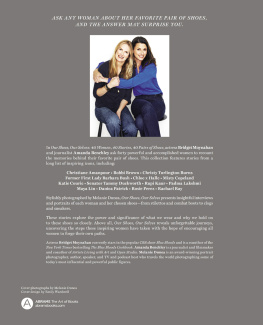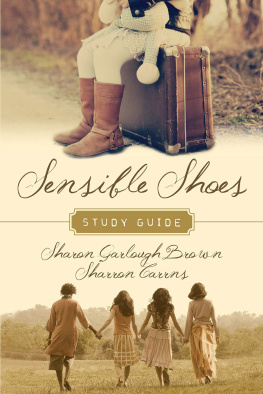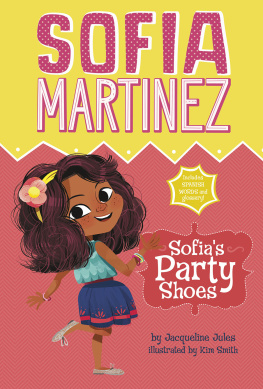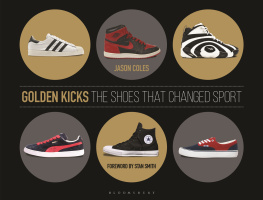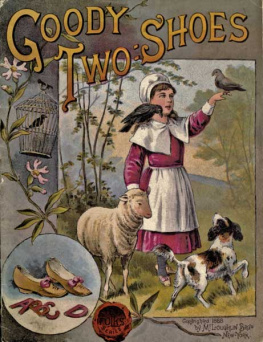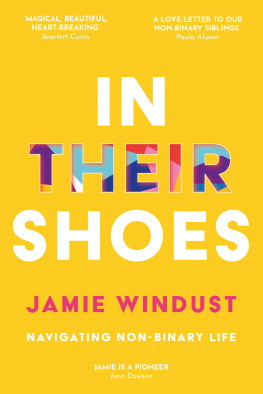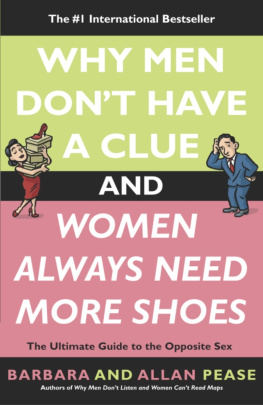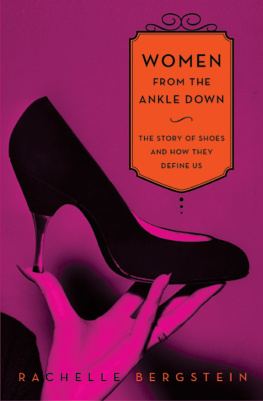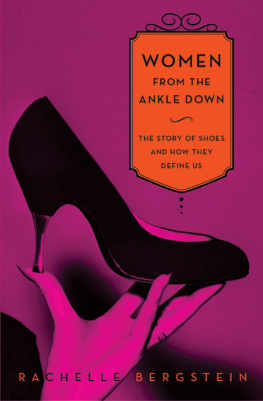

IF THE MEN SEE YOU JUMP, THEY WONT DARE CHICKEN OUT.
AS TOLD TO FOUR-STAR GENERAL ANN DUNWOODY, BEFORE HER FIRST PARATROOP JUMP


Dedicated to Eloise, Annabel, Maeve, Clare, Mabel, Ellen, Alice, Katie, Phebe, Georgie, Violet, Erela, Ella, Drew, Rosie, Lutce, Isabel, Wilhelmina, and all the girls and women out there who have a dream but maybe dont know how to take their first step. Hopefully some of the footsteps we trace in the following pages will show you that you arent alone and also inspire you to forge your own path.




CONTENTS
INTRODUCTION
This project all started with cleaning out my closet. I had done it so many times and moved shoes back and forth to the storage unit. This was the year I finally had enough. Why was I keeping them all? I was never going to wear them again. Hell, I cant even fit into most of them anymore!
I started making a pile of the ones I wanted to donate... and I found that I kept taking them out of that pile for one reason or another. Each pair had a memory attached to it. Some I wanted to cherish, some I wanted to forget... but they all had meaning from specific times of my life.
I didnt want to continue to pay New York City storage unit prices for a bunch of shoes that I would never wear. I also felt that they were all soooo gorgeous that someone else should be wearing them. So why not photograph them? I thought this could be a fun project but realized fast that... its not the shoes that mean anything, its their stories. And if my shoes have stories... I bet a lot of women have even better stories! So I called my friend Amanda.
BRIDGET MOYNAHAN


I will never forget sitting in a taxi on my way to dinner, when I got a text from Bridget: Cleaning out my closet. Why cant I get rid of some of the crazy shoes that I never wear anymore. Is there a book there?
We talked about the idea and some of her favorite shoes, and soon a story emerged about how an emotionally trying time led to her pair of black Miu Miu motorcycle boots. I then looked at my own shoe closet and found my pair of gold Gucci loafers. I had first seen them on two talented, inspiring women I knew at a small dinner party. I bought them for myself and for my good friend who had been the host of the party and declared them the Sisterhood Shoe. Two other friends quickly bought them as well. Those shoes make me appreciate my sisterhood of friends every time I wear them.
And thats how we discovered what this book was about. Turns out, it was no wonder that Cinderella felt so transformed when she put on her glass slippers. Shoes can change your life and, equally important, your self-perception. So, with this concept in mind, Bridget and I drew up a dream list of women whose shoes we most wanted to see and whose stories we most wanted to hear: teachers, politicians, scientists, entrepreneurs, athletes, marine biologists, coders, and writers, to name a few of these inspiring figures.
So many women from our dream list agreed to participate. In the past year, I interviewed nearly every woman in this book. Often these interviews were so moving and powerful that I ended up crying. I have told most of these stories in these pages, trying to stay as true to their owners voices as possible. Some of our participants wrote their own stories, which was a tremendous gift to this project. As you will see, each shoe has a storya story of accomplishment, challenge, glory, triumph, transformation. Memories. We invite you to come along on our journey.
AMANDA BENCHLEY


UMBER AHMAD
ENTREPRENEUR
The first memory I have of these shoes was when I was five or six years old. I noticed my mother wearing them, and she told me that they were from her mother, my grandmother. I always loved these shoes, because they were so beautiful. Mamas shoes were my dream shoes.
My mother married my father after knowing him for ten days. They then moved from Pakistan to Boston, and I believe it was around that time that my grandmother gifted the shoes to her daughter. She wanted my mom to have things to remember her by, and also of the country she was leaving behind.
The shoes are a Pakistani tradition, notably of the province of Sindh. These shoes are a gorgeous example of traditional Sindhi art, with the vibrant-colored threads hand-stitched into the leatherwork. Shoes arent made this way anymore, with such care and precise attention.
My parents moved to the United States in 1968. My mother showed up in conservative Boston with her beautiful, brightly colored clothes and saris, which she would wear all about town. Part of the reason the shoes are so worn through is because she used to walk everywhere in them, even on the cobblestone streets.
I grew up in northern Michigan, and, when I was sixteen, I moved to Boston to attend university at MIT. It was then that my mother handed me those shoes. In northern Michigan, we were not surrounded by anyone of our culture, faith, or origin. I didnt grow up around other Pakistanis or have Pakistani friends; I didnt have people with whom I could identify culturally. It didnt faze me, because I knew in my heart all I needed to belong to was my family. That being said, I did assume that I was going to connect with other South Asians when I got to college.
I was surprised that that wasnt the case. I wasnt welcomed with open arms into the South Asian community. Instead, there were further distinctions and judgments made because I was born in the United States, and not in Pakistan or India. It wasnt enough that my family came from that country, that all my relatives came from that country, that I spoke the language and wore the clothes. I was still considered different.
As a result, I didnt wear the shoes my mother gifted me right away. I continued to figure out how I was going to connect with my Pakistani identity. One day, I saw a flyer for a bhangra class. Bhangra is a traditional Punjabi dance. Despite being Punjabi, I didnt grow up dancing bhangra, so one day I convinced my sister, who was also at school in Boston, to sign up for a class.
Next page
